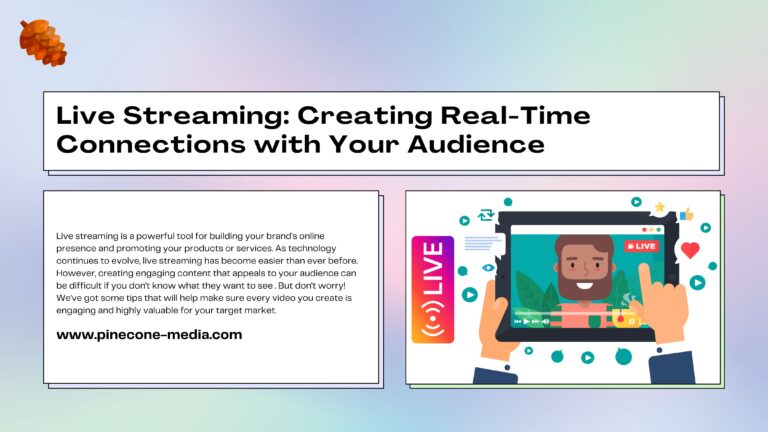Storytelling in Marketing: How to Connect with Your Audience on a Deeper Level
In the crowded digital landscape, storytelling has emerged as a powerful tool for marketers aiming to connect with their audience on a deeper, more meaningful level. By weaving compelling narratives into your marketing strategy, you can engage your audience emotionally, build trust, and foster lasting loyalty. At Pinecone Media, we explore the art of storytelling in marketing and how it can transform your brand’s connection with its audience.

Why Storytelling Matters in Marketing
Storytelling is a fundamental human experience. For centuries, stories have been used to entertain, educate, and inspire. In the context of marketing, storytelling allows brands to communicate their values, mission, and identity in a way that resonates with their audience. Here’s why storytelling is essential:
- Emotional Connection: Stories evoke emotions, and emotions drive decision-making. By telling stories that reflect your audience’s values, struggles, and aspirations, you can create a strong emotional connection that goes beyond the transactional nature of traditional marketing.
- Memorability: People are more likely to remember a well-told story than a list of facts or features. A memorable story can make your brand stand out in a crowded marketplace, ensuring that your message sticks with your audience.
- Authenticity: In an era where consumers are increasingly skeptical of advertising, storytelling offers a way to demonstrate authenticity. By sharing genuine stories about your brand’s journey, challenges, and successes, you can build trust with your audience.
- Engagement: Stories naturally engage people. Whether it’s a video, blog post, or social media campaign, a good story can captivate your audience’s attention and encourage them to interact with your content.
Key Elements of Effective Storytelling in Marketing
To leverage the power of storytelling in your marketing strategy, it’s important to focus on key elements that make a story compelling:
- Know Your Audience: Understanding your audience is the foundation of effective storytelling. Research their needs, preferences, and pain points to craft stories that resonate with their experiences and aspirations.
- Craft a Relatable Character: A relatable protagonist, whether it’s your brand, a customer, or a fictional character, helps your audience see themselves in your story. This character should face challenges, make decisions, and achieve goals that reflect the journey your audience is on.
- Create a Clear Narrative Structure: Every good story has a beginning, middle, and end. Start by setting the scene and introducing the challenge or conflict. Then, build tension as the character faces obstacles, and finally, resolve the story with a satisfying conclusion that ties back to your brand’s message.
- Focus on Emotion: Emotions are the driving force behind storytelling. Whether you aim to inspire, entertain, or empathize, make sure your story evokes a strong emotional response that aligns with your brand’s values.
- Incorporate Visuals: Visual elements, such as images, videos, and infographics, enhance storytelling by making it more immersive and engaging. Visuals help convey complex ideas quickly and can significantly increase audience retention.
How to Implement Storytelling in Your Marketing Strategy
- Content Marketing: Integrate storytelling into your blog posts, articles, and social media content. Share stories about your brand’s origins, customer success stories, or behind-the-scenes insights that offer a glimpse into your company’s culture.
- Video Marketing: Videos are an ideal medium for storytelling. Use video content to tell stories about your products, showcase customer testimonials, or highlight your brand’s impact on the community.
- Social Media Campaigns: Leverage the power of social media to share bite-sized stories that capture your audience’s attention. Use Instagram Stories, Twitter threads, or LinkedIn posts to tell engaging stories that encourage interaction and sharing.
- Email Marketing: Storytelling can make your email campaigns more relatable and engaging. Use storytelling techniques to craft compelling subject lines, share customer journeys, or introduce new products in a narrative format.
Storytelling is more than just a marketing tactic; it’s an art form that can transform the way your brand connects with its audience. By tapping into the emotional power of stories, you can create deeper, more meaningful relationships with your customers, driving engagement, trust, and loyalty. At Pinecone Media, we help businesses harness the art of storytelling to craft powerful narratives that resonate with their audience and elevate their brand.
Storytelling in Marketing, Audience Connection, Brand Storytelling, Emotional Engagement, Marketing Strategy




